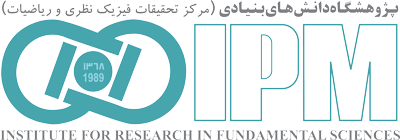“School of Astronomy”
Back to Papers HomeBack to Papers of School of Astronomy
| Paper IPM / Astronomy / 18194 |
|
| Abstract: | |
|
The most inner kpc regions of galaxies is central in galaxy formation and evolution studies. The central molecular zone (CMZ) of the Milky Way offers a unique laboratory to study the formation and evolution of structures surrounding its super massive black hole. We study the role of the thermal and nonthermal processes in the energy balance and structure formation in CMZ by taking advantage of the MeerKAT 1.3 GHz radio continuum observations, the ATCA H67 radio recombination line from the Survey of Water and Ammonia in the Galactic Center (SWAG), and the JCMT/NRO CO(1-0) data. For the first time, we present purely synchrotron emitting structures using the thermal radio template technique and estimate the equipartition magnetic field strength. The magnetic field is tightly correlated with molecular gas while it is uncorrelated with SFR in the CMZ. However, in the inner most region, i.e., the central nuclear disk (CND), the magnetic field strength and SFR are found correlated. This indicates that a small-scale dynamo mechanism is occurred due to a very recent star formation activity in CND. Investigating the thermal and nonthermal pressures as well as the mass-to-magnetic flux ratio, it is inferred that the molecular clouds are mostly stable and sub-critical. Hence, magnetic field must play an important role in stabilizing clouds against gravitational collapse or diffusion. Moreover, we find a sharp decline (increase) in the radial distribution of the neutral (ionized) gas toward the center at 1-1.5~pc likely due to the SMBH feedback.
Download TeX format |
|
| back to top | |



















